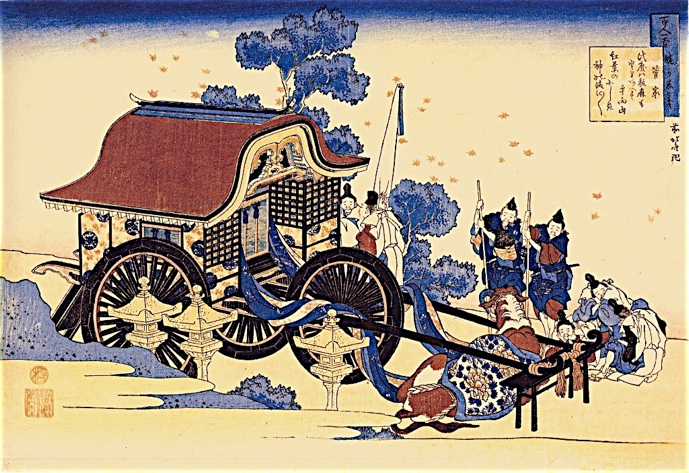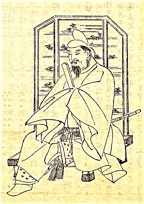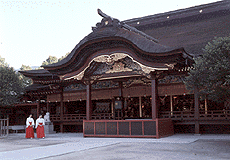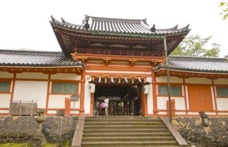菅家


このたびは
幣もとりあへず
手向山
紅葉の錦
神のまにまに
かんけ
このたびは
ぬさもとりあえず
たむけやま
もみじのにしき
かみのまにまに
Sugawara no Michizane
On this occasion,
All I can offer for now
Are Mount Tamuke’s
Brocades of red leaves
As a tribute to the gods.
Sugawara no Michizane, (845 - 903), also known as Kan Shojo, or Kanke (meaning ‘the Sugawara family), was a scholar, poet, and politician of the Heian period. The Dazaifu Tenmangu is a shrine built over the grave of Michizane Sugawara venerated by the Japanese throughout the country as the Tenman-Tenjin (the deified spirit of Michizane), or the god of learning, literature or calligraphy.
The place is also known for its many varieties of plum trees. One tree, known as Tobiume, stands directly to the right of the ‘honden’. Legend has it that after Michizane left Kyoto in exile, he yearned so much for this tree that it was uprooted and brought here.
Hokusai



By Kikuchi Yosai

Dazaifu Tenmangu - Honden
It is said that Michizane wrote this poem when he accompanied retired emperor Uda on a trip to the temple on Mount Tamuke, Offering Hill, in Nara (once capital of Japan), and was by etiquette not allowed to present his offerings at the same time as the emperor. This shrine was built in 749. The site was famous for its wonderful autumn foliage. It is generally believed that Tamukeyama here refers to the Tamukeyama Hachiman Shrine.
Hokusai shows the brocades on the emperor’s cart. Bernhard Scheid (Österreichische Akademie der Wissenschaften Institut für Kultur- und Geistesgeschichte Asiens) thinks the scene depicted here refers to the oxen that refused to move when carrying the corpse of Michizane at the place that later became Dazaifu Tenmangu.
Tamukeyama Hachiman Shrine, Nara

